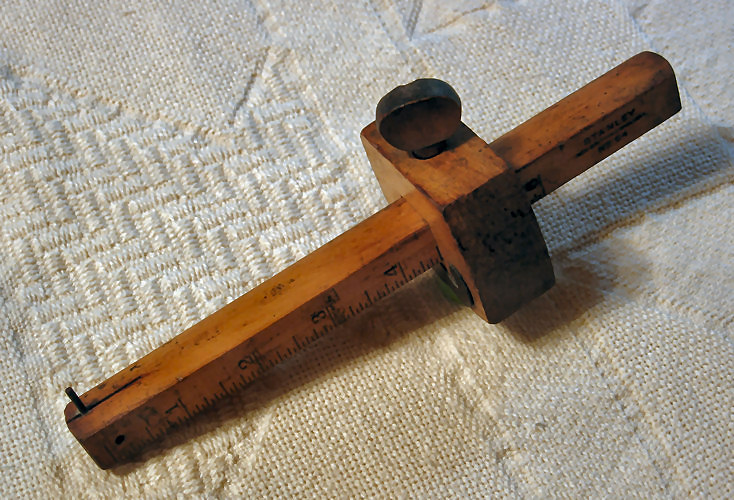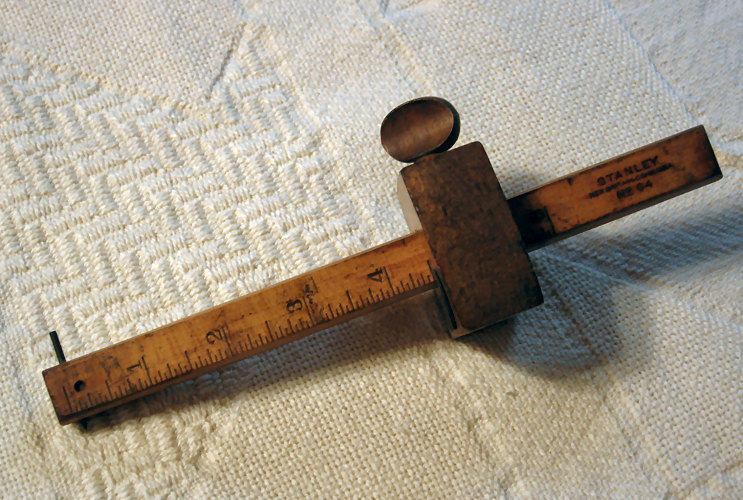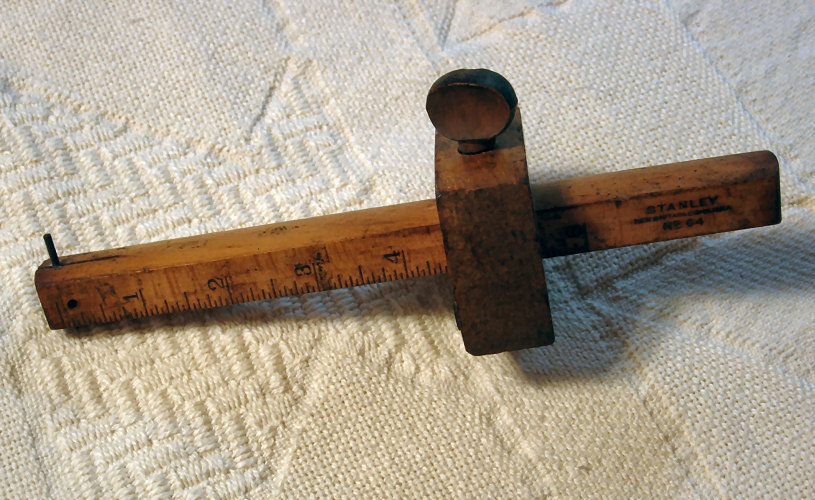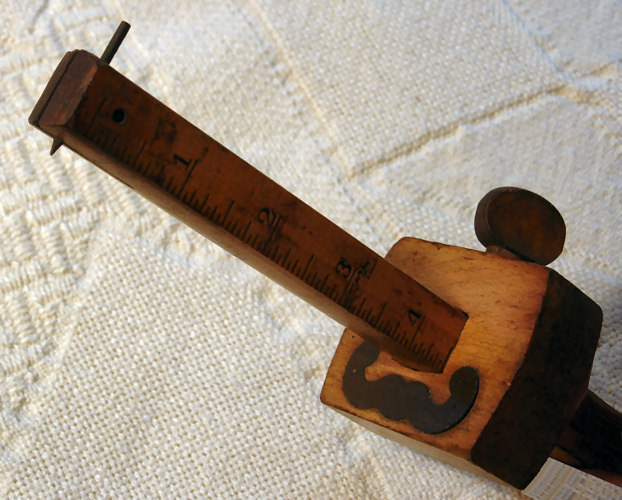


| This item is a tool used for marking boards at set distances from the edge. It dates to the 1910s. It was used to scribe lines on wood at a set distance from an edge. It would scribe the line parallel to a reference edge or surface. A common name of this tool was: scratch gauge. The marking gauge is stamped with the name: Stanley; the town of manufacture: New Britain, Conn, USA; and the model number: 64. The tool is made of beech wood with a thumb screw that was usually made of boxwood. A brass pin on the one end protruded through the 8" long arm that is 3/4' square on cross section. The arm was marked off and incised in inches and sixteenths of an inch up to the six inch point. A small metal screw beside the pin allowed the pin to be replaced and kept tightened in place. The long arm, more specifically called the bar or beam, is passed through a thick wooden plate, more specifically called the main body or headstock, and the thumb screw loosens and tightens to allow the main body to be moved along the length of the bar and then tightened in place. A piece of brass plate, cut in a fancy shape, and attached to the side of the main body facing the scribing pin, provided a smooth, slick edge to run along the reference edge or surface. The No. 64 model of marking gauge was produced by the Stanley tool company circa 1912. It is a nice example of hand tool produced in an era before mass-production resulted in dull, boring and simply utilitarian tools. |



